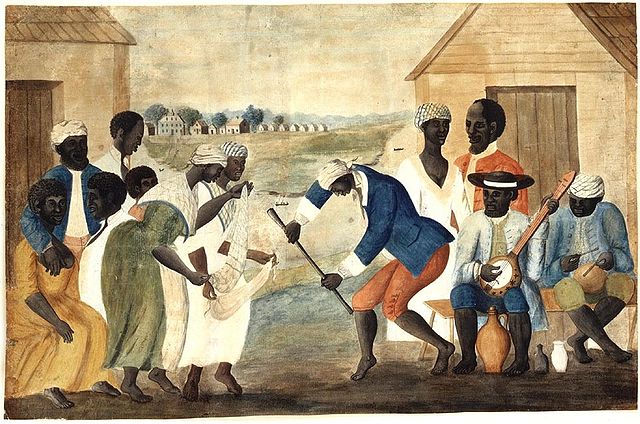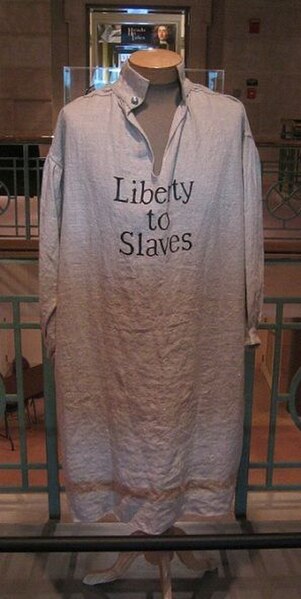In the British colonies in North America and in the United States before the abolition of slavery in 1865, free Negro or free Black described the legal status of African Americans who were not enslaved. The term was applied both to formerly enslaved people (freedmen) and to those who had been born free, whether of African or mixed descent.
Free woman of color with quadroon daughter (also free); late 18th-century collage painting, New Orleans.
"Learning is wealth". Wilson, Charley, Rebecca, and Rosa. Mixed-race slaves from New Orleans
Jean Baptiste Point du Sable, the first permanent settler in 1780s Chicago and the "Father of Chicago" who traveled up the Mississippi River from New Orleans. There are no known portraits of Jean Baptiste Point du Sable made during his lifetime. This depiction is taken from A.T. Andreas' book History of Chicago (1884).
Solomon Northup was born and raised a free negro in the free state of New York and was kidnapped and sold into Southern slavery in 1841, and was later rescued and regained his freedom in 1853
Slavery in the United States
The legal institution of human chattel slavery, comprising the enslavement primarily of Africans and African Americans, was prevalent in the United States of America from its founding in 1776 until 1865, predominantly in the South. Slavery was established throughout European colonization in the Americas. From 1526, during the early colonial period, it was practiced in what became Britain's colonies, including the Thirteen Colonies that formed the United States. Under the law, an enslaved person was treated as property that could be bought, sold, or given away. Slavery lasted in about half of U.S. states until abolition in 1865, and issues concerning slavery seeped into every aspect of national politics, economics, and social custom. In the decades after the end of Reconstruction in 1877, many of slavery's economic and social functions were continued through segregation, sharecropping, and convict leasing.

Image marketing 18th-century tobacco produced by enslaved laborers in the Colony of Virginia (Colonial Williamsburg Foundation)
The Old Plantation, watercolor attributed to John Rose, possibly painted 1785–1795 in the Beaufort District of South Carolina (Abby Aldrich Rockefeller Folk Art Museum)
This postage stamp, which was created at the time of the Bicentennial, honors Salem Poor, who was an enslaved African-American man who purchased his freedom, became a soldier, and rose to fame as a war hero during the Battle of Bunker Hill.
A smock similar to those worn by Black Loyalists in the Ethiopian Regiment.








